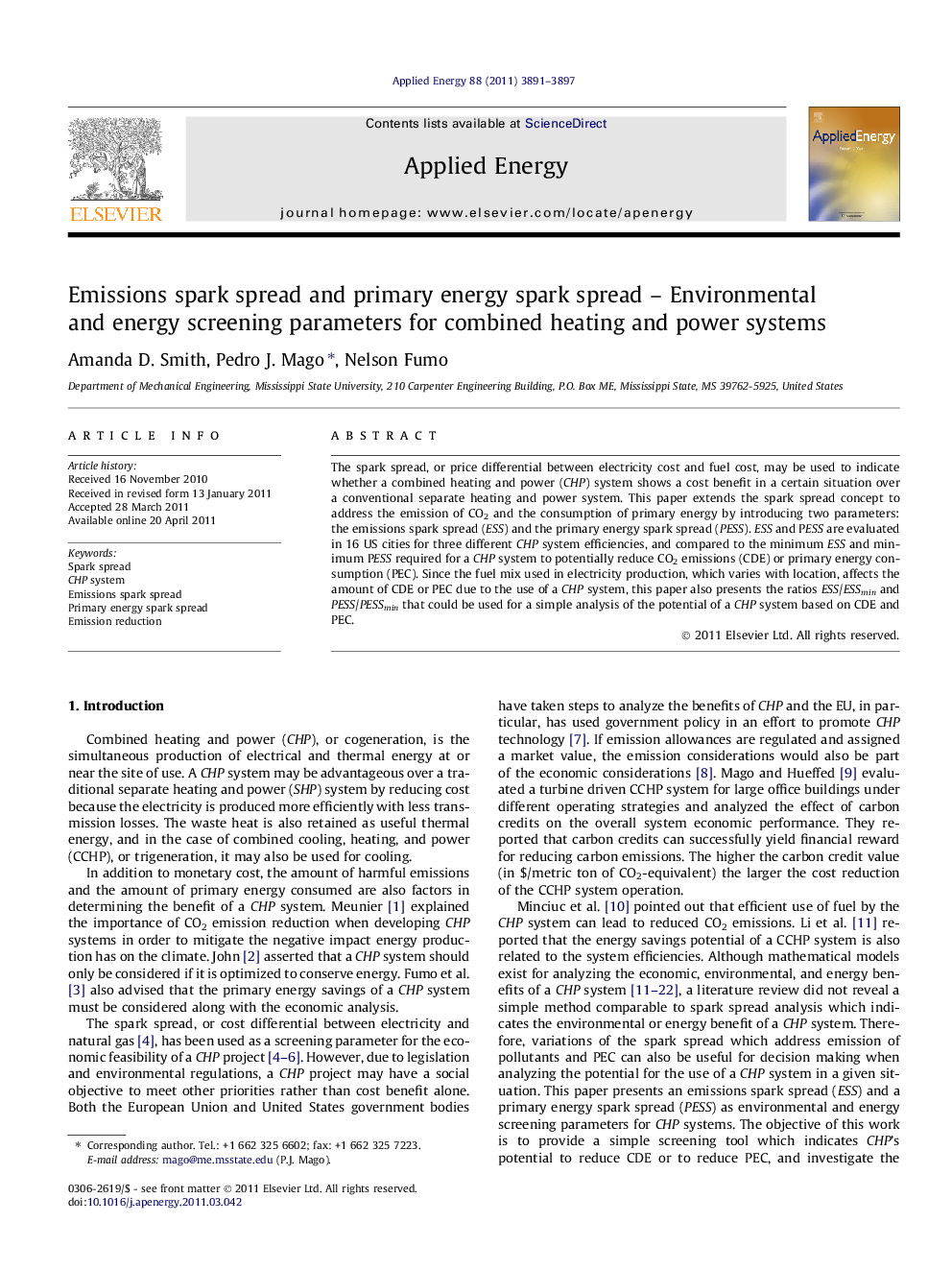| Article ID | Journal | Published Year | Pages | File Type |
|---|---|---|---|---|
| 244197 | Applied Energy | 2011 | 7 Pages |
The spark spread, or price differential between electricity cost and fuel cost, may be used to indicate whether a combined heating and power (CHP) system shows a cost benefit in a certain situation over a conventional separate heating and power system. This paper extends the spark spread concept to address the emission of CO2 and the consumption of primary energy by introducing two parameters: the emissions spark spread (ESS) and the primary energy spark spread (PESS). ESS and PESS are evaluated in 16 US cities for three different CHP system efficiencies, and compared to the minimum ESS and minimum PESS required for a CHP system to potentially reduce CO2 emissions (CDE) or primary energy consumption (PEC). Since the fuel mix used in electricity production, which varies with location, affects the amount of CDE or PEC due to the use of a CHP system, this paper also presents the ratios ESS/ESSmin and PESS/PESSmin that could be used for a simple analysis of the potential of a CHP system based on CDE and PEC.
► Spark spread concept extended to address emissions and energy consumption. ► Emissions spark spread (ESS) and primary energy spark spread (PESS) introduced. ► ESS and PESS evaluated for 16 US cities and 3 different CHP system efficiencies. ► Calculated minimum ESS and PESS required for CHP system to be potentially beneficial. ► Indicates potential for reducing CO2 emissions or primary energy consumption with CHP.
